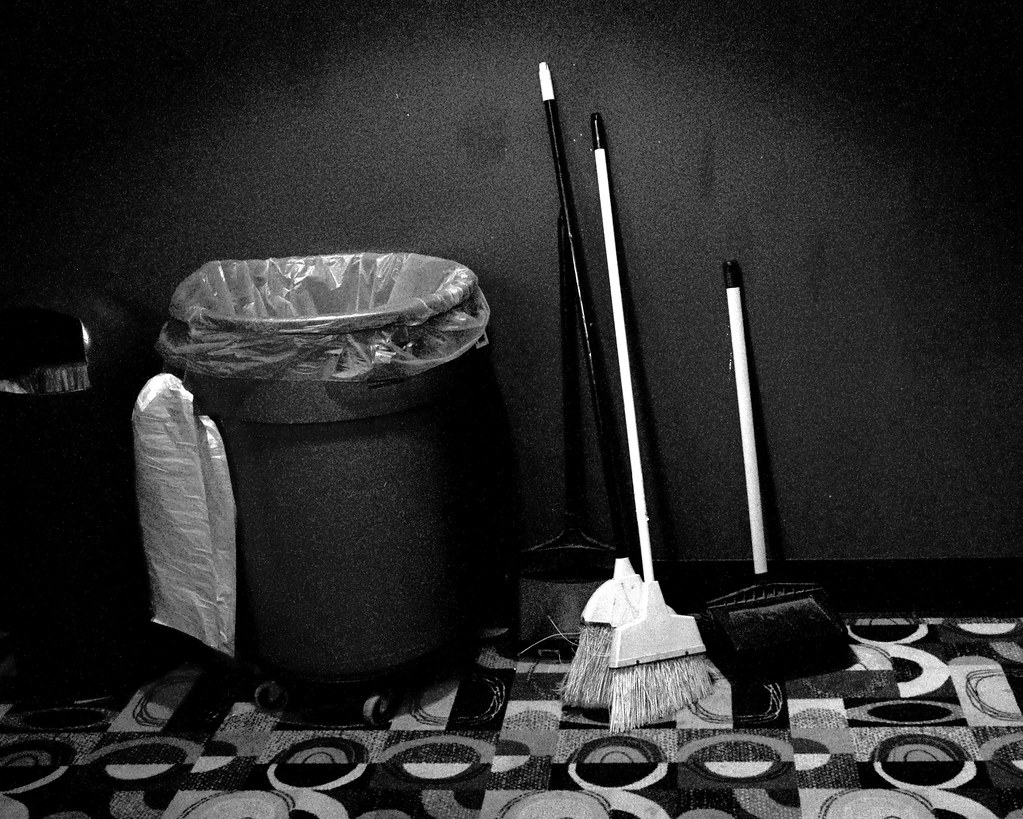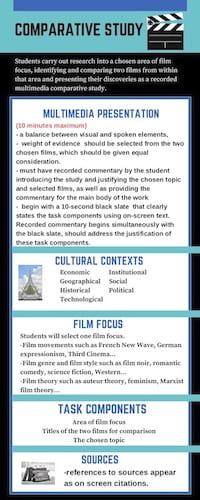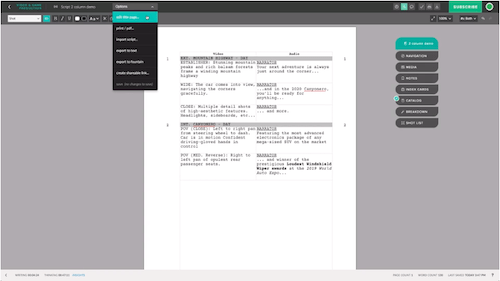- The camera often follows the character’s eyes.
- The use of space is excellent
- Edits are quite amazing
- Drama is anticipation mingled with uncertainty
https://docs.google.com/presentation/d/1hnNaUdAU6zH3y5O8ByzuFqmWxrdA-ji7kfUNUfzCTlI/edit?usp=sharing
In this session, I was in charge of camera work and cinematography in the film. I used an IPhone 11 for video, selected shot locations in the general area, and came up with good shot types for the scenes, along with the director and actors. The director, screenwriter and I collaborated on the interpretations of the story, and how to properly portray certain scenes.
I innovated ways to capture chase scenes and some actor movements so they would correspond with camera movements. I also solved problems with shot angles not working, as they presented strangely.
I communicated well with the actors, leading to synced actor and camera movements. There were some creative differences over some shots, and whether to include them.
I used an Iphone to shoot most of the movie, and used autofocus in some of the shots, as well as backing up the clips to a safe folder.
I prepared for bad situations by bringing backup supplies for nearly everything, along with a charging brick in case the phone battery got low, which it did. Working on different locations and scouting was very good training for my future career.
“Cinematography during chase was impressive” – Shaynan
“Timing and actor movements were captured well” – Tim
“Desaturation and shooting of original community was done well” – James
Some shots were cut that I would have preferred in the final cut, and we added a shot that I vehemently opposed, which I feel reduced the overall quality early on in the film. Most creative differences were settled fairly quickly and calmly, but some choices over shots did get loud. Overall I would give it (for a eerie comedy satire made by HS students) a 7.5/10
Grammarly and years of experience in reading
Shaynan Montenegro
| Cue | Notes |
| Space | |
| Line and Shape | |
| Tone | |
| Color | |
| Movement | |
| Rhythm | |
I used Parker Finn’s short film “The Hidebehind” as both partial inspiration for the shot as well as for it’s use of camera techniques to relay the supernatural powers of an entity, and it’s chase scene.
| February 18 | Brainstorm, Write Script |
| February 23 | Finish script |
| February 24 | Film Scenes |
| February 25 | Continue Filming Scenes |
| February 28 | Record ADR |
| March 1 | Compose Music |
| March 2 | Edit Scenes |
| March 3 | Create slideshow, Continue editing |
| March 4 | Finish Editing |
none
https://drive.google.com/file/d/13xByHCXNZsxRvmB73C53sFsRKr9hRhg7/view?usp=sharing
https://docs.google.com/presentation/d/1t8v1zrEnytwyiI9J4Nre2C65_2X3WNUa0wUHCeiYLuE/edit?usp=sharing
In this session, I was in charge of camera work and cinematography in the film. I used 1 camera, selected shot locations, and came up with good shot types for the scenes. The director and I collaborated on the different shot styles and story, as well as how to best portray it.
My shot choices were creative with the way to use our available resources to create scenes with supernatural elements.
I worked with the actors to explain where to stand and how to act with the camera.
I learned about the multiple visual story elements using the book The Visual Story by Bruce Block.
I can use what I learned for future projects as well as to analyze movies I watch for fun.
There were comments on the clever seamless shot at the end of the film.
One of my favorite shots wasn’t used due to editing constraints, which I feel lowered the overall quality. However, overall I liked it.
I learned about the importance of recharging your batteries in your cameras, as well as solved problems regarding good shots with some flaws continuity wise.
Grammarly.
Awaiting

“horror” by wolfgangfoto is licensed under CC BY-ND 2.0

“Movie Theater Cleaning” by roeyahram is licensed under CC BY-NC-ND 2.0
I was the cinematographer for this cycle.
Specific: I will learn to utilize intentional lighting as well as good camera focus. This is important because good films have both of these qualities.
Measurable: I will measure progress by talking with my teammates and comparing between different set ups and camera settings.
Achievable: I have the skills to achieve this goal. I have steady hands, experience with cameras and lighting from designing games (and playing them), and a good eye for detail. This goal requires a decent amount of effort, and I intend to complete it for good grades and experience with film.
Relevant: I am setting this goal because I want to become a better cinematographer and learn new skills for my roles and life.
Time-Bound: The deadline is in the past now, but it was realistic. It is not a class restraint, it was a personal restraint that kept me from completing it.
Dean Cundey – Cinematographer for The Book of Boba Fett: Dean Cundey has been a cinematographer in a lot of movies, but has also been hired for Disney’s newest tv series, and considering the success of The Mandalorian, they are probably going to go for a safe bet, which gives credit to Dean Cundey.

“Film scripts for sale in Soho! #newyork #newyorkcity #nyc #movies” by Nat Ireland is licensed under CC BY-NC 2.0
A guide to planning, researching, and creating your Film Comparative Study
“Simple formative analysis of film elements, no matter how precise or insightful, won’t cut it which is why the research question needs to be crafted in such a way that it provides scope for theoretical and socio-historic exploration. It’s basically an EE in disguise but focusing on two very different textual sources.”


For this assessment task, each student identifies, selects, and researches each of the following task components.
The assessment criteria for this task requires students to provide a strong justification for the choice of task components as part of the recorded multimedia comparative study. This includes the student’s justification for how films arise from contrasting cultural contexts.
| Which films are you considering for your final Comparative Study? List as many as you wish below as part of an initial brainstorm. Remember that you must select TWO films from contrasting cultural contexts for this task.
e.g. CITIZEN KANE |
Year, Country, and Director of the film.
e.g. 1941, USA, Dir: Orson Welles |
| Robocop | 1987, USA, Paul Verhoeven |
| Robocop (2014) | 2014, USA |
| Inuyashiki | 2018, Japan |
| Film Focus Possibility – identify the broad focus area and then add specifics (e.g. “THEORY – Auteur theory” or “GENRE – Horror”). Develop at least THREE options…you can create more by adding more rows. | Justification for this Film Focus. Be as specific as possible. |
| GENRE – Sci-fi | Both of the films deal with human augmentation and cybernetic replacement after an accident. |
| THEORY – Narrative | Both of the movies deal with the enhanced protagonist rising up against another powerful mechanical force, then beating them. |
| GENRE – Sci-fi | Exploring how the different cultures explore needed cybernetic augmentation would be an interesting comparison. |
For this assessment task, “cultural context” involves consideration of some of the following factors, some of which may be blended (such as socioeconomic factors).
| Identify at least TWO Cultural Context possibilities for your chosen films. |
Justification for this Cultural Context. Be as specific as possible. |
| Geographical Context | One of the movies is in Japan, and one of them is in the U.S. They both are made around the same time, which means that it will be primarily geographical rather than time periods influencing the difference. |
| Socioeconomic Context | Both Japan and the USA are capitalist systems, but the social differences will be an interesting comparison. |
Consolidate your thoughts above and develop at least THREE different research question possibilities. More are possible by adding additional rows to the table below. FYI these will be shared with the full class for discussion of strengths and weaknesses.
| Your Chosen Area of Film Focus | Topic for Comparative Study (written as a research question) |
| GENRE – Sci-fi | Inside their respective universes, how does the Japanese public view cybernetically enhanced humans compared to how the U.S. views them? |
| THEORY – Narrative | To what extent did the movies explore the protagonist(s) reactions to their new forms? |
| GENRE – Sci-fi | To what extent did the movies highlight the importance of retaining their humanity? |
Using your topic options in the table above, select ONE to be your final topic for this Comparative Study task. NOTE: There are examples from the IB of what this should look like below this table.
| Your Chosen Area of Film Focus | Film 1 | Film 2 | Contrasting Cultural Context | Topic for Comparative Study practice task (written as a research question) |
| THEORY – Narrative | RoboCop 2014 | Inuyashiki | Geographical Context | To what extent did the movies explore the protagonist(s) reactions to their new forms? |
| Develop 3-5 main arguments that can be made about your topic based on your research question and chosen film focus. | Brainstorm how you could support these arguments within your video essay. |
| Identify at least 15 scenes from your chosen films that will help support the arguments you have outlined above. Screen clip a frame from each scene below. | Write notes about how this scene helps support your argument. (These notes will help form your voice-over narration.) |
*Add more rows as needed.
| Identify at least 3-5 secondary sources (articles, books, websites, video essays, etc.) which provide information that help support your arguments being made. In this column include the specific source citations. | Summarize the detailed information from the secondary source that you can use in this column. (You can copy+paste if they are from online sources.) |
*Add more rows as needed.
Using the information, scene choices, and external sources you have compiled in steps 6-8, you will now write your voiceover narration and match it up to your chosen visual examples.
Remember that you need to:
| Which Visual Evidence/Scenes line up to this part of the narration? | Voiceover Narration Ideas |

Now you will collect all media resources needed for the task and construct your video essay.
| Area of film focus | Film 1 | Film 2 | A possible topic for comparative study |
| Film movement: German Expressionism | The Cabinet of Dr. Caligari (1920) | Edward Scissorhands (1990) | How and with what effect are specific film elements of German expressionism used within a chosen contemporary film? |
| Film movement: French New Wave | Breathless (1960) | Badlands (1973) | The influence of the French New Wave on New Hollywood’s use of innovative film elements in its representation of youth and violence. |
| Film genre and film style: Black comedy | No. 3 (1997) | The Big Lebowski (1998) | To what extent do “black comedy” films differ according to cultural context? |
| Film theory: Soviet Montage | Battleship Potemkin (1925) | Koyaanisqatsi (1982) | To what extent are specific features of Soviet montage theory faithfully employed in a contemporary experimental film? |
| TASK COMPONENTS (ACTION) | Notes / Suggestions | |
| __ | Assemble Findings | |
| __ | Develop a personal and critically reflective perspective | |
| __ | Identify and gather appropriate audio-visual material to support the study | |
| SCREENPLAY | ||
| __ | Justify the chosen topic and selected films | |
| __ | Make sure that the text is in a formal academic register (can be in the 1st person) | |
| __ | The balance between visual and spoken elements | |
| __ | Make clear reference to your sources as on-screen citations (text on-screen) | |
| __ | Make sure the primary weight of evidence for the study from the two chosen films | |
| __ | Make sure each film is given equal consideration | |
| __ | Make sure film language information is communicated clearly throughout (avoid “to be” verbs – make statements like “blah is this.”) | |
| __ | Make sure information is communicated logically rooted in film language | |
| __ | Have another student highlight the WHAT WHY HOW in your draft screenplay | |
| VIDEO ESSAY | ||
| __ | Recorded voice and edited commentary numerous times until happy with the material | |
| __ | Make sure your name and the school’s name ARE NOT IN THE ESSAY | |
| __ | Make sure to have 10-second title card with:
1. Area of film focus 2. Titles of the two films for comparison 3. The chosen topic |
|
| __ | Include breaks in your recorded commentary to enable other audio-visual material included in the study to be clearly heard (if needed) | |
| __ | Make sure film clip length matches points being made | |
| __ | Make sure still images have citations on-screen if you have them | |
| __ | Make sure text on-screen is legible and spelled correctly | |
| __ | Make sure information is communicated audibly (levels are good for all sound) | |
| __ | Make sure information is communicated visually appropriate manner | |
| __ | Make sure background music is from Creative Commons and is cited | |
| __ | Make sure edits are clean | |
| __ | Make sure the presentation is 10 minutes maximum, including title card and credits | |
| __ | Make sure two films are listed in sources | |

“Spooky, Creepy, Frightful, Sinister, Eerie, Macabre, Scary” by ShellyS is licensed under CC BY-NC-SA 2.0
During this time I researched how to use Blender. I learned about creating projects, drawing in Blender, created models, animating those models, adding materials to these models, and more random things.
To learn how to do this, I used a blender tutorial by Blender Guru: https://www.youtube.com/watch?v=TPrnSACiTJ4